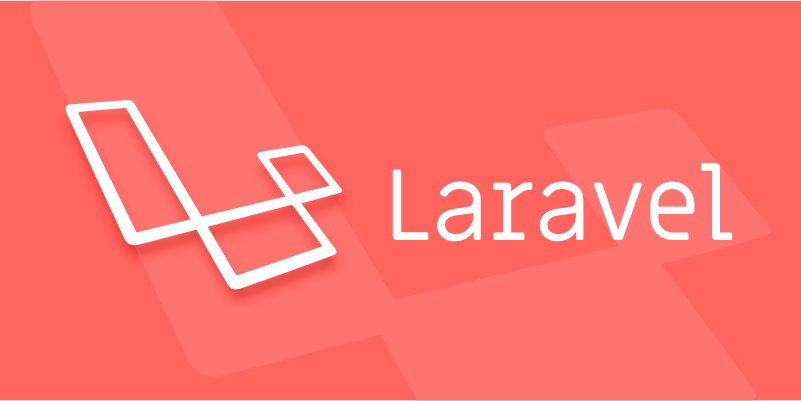Implementing Event-Driven Architecture with Laravel Events and Listeners
Jul 06, 2025 am 01:48 AMEvent-driven architecture (EDA) is a system design method that triggers and responds to behaviors through "events" and Laravel implements EDA using Events and Listeners. 1. An event is an action trigger point, such as user registration; 2. The listener performs operations in response to events, such as sending emails and logging; 3. Create events and listeners through the Artisan command; 4. Bind events and listeners in EventServiceProvider; 5. Use event() or Event::dispatch() to trigger events and pass data; 6. Enable queue asynchronous execution for time-consuming tasks; 7. Pay attention to naming specifications, event granularity, test listeners and listener sequence control. This method improves code decoupling and maintainability and enhances system expansion capabilities.

Event-driven architecture (EDA) is a very practical design pattern when building modern web applications. Laravel provides native Events and Listeners support, allowing us to implement this architecture easily. It not only makes the code structure clearer, but also improves the degree of decoupling between modules.

What is an event-driven architecture?
Simply put, an event-driven architecture is a design method in which the system triggers and responds to behaviors through "events". Once one component issues an event, other components listening to the event can react without directly calling each other's methods.

For example, after the user registers successfully, sending welcome emails, recording logs, push notifications and other operations can be handled as the listener of the event, rather than writing all these logics in the registration method.
Laravel's Events and Listeners are the core tools for implementing this mechanism.

How to create Events and Listeners
Laravel provides the Artisan command to quickly generate Events and corresponding Listeners:
php artisan make:event UserRegistered php artisan make:listener SendWelcomeEmail --event=UserRegistered
You can also use the --queued parameter to make the listener execute asynchronously, which is very useful for time-consuming tasks.
After the generation is completed, you will see the corresponding files in app/Events and app/Listeners directories. The next thing to do is bind the event to the listener.
Open EventServiceProvider.php , find the $listen array, and add the following content:
protected $listen = [
'App\Events\UserRegistered' => [
'App\Listeners\SendWelcomeEmail',
'App\Listeners\LogUserRegistration',
],
]; This way, when UserRegistered event is fired, both listeners will be called.
Trigger events and pass data
After defining the event and listener, the next step is to trigger the event in the appropriate location.
For example, in the registration controller, an event is triggered after the user saves successfully:
use App\Events\UserRegistered; // ... event(new UserRegistered($user));
Or use Event facade:
use Illuminate\Support\Facades\Event; Event::dispatch(new UserRegistered($user));
The event class itself is a normal PHP object. You can pass the required data into the constructor and use it in the listener.
For example, in SendWelcomeEmail :
public function handle(UserRegistered $event)
{
Mail::to($event->user->email)->send(new WelcomeEmail());
}Improve performance using queues
If your listener performs time-consuming operations (such as sending emails, text messages, image processing, etc.), it is recommended to add it to the queue to avoid blocking the main thread.
To enable queueing, just have your listener implement the ShouldQueue interface:
use Illuminate\Contracts\Queue\ShouldQueue;
class SendWelcomeEmail implements ShouldQueue
{
//
} Then configure QUEUE_CONNECTION in .env to ensure that the queue driver works normally (such as database, redis, sqs, etc.).
At this time, the listener will be pushed to the queue for asynchronous execution, which will not affect the response speed of the main process.
Tips and precautions
- Naming specifications are important : keep the semantics of events and listeners clear for later maintenance.
- Rationally divide the granularity of events : do not over-split, and do not over-general. An event should represent a business action.
- Test Listener : You can verify that the listener performs as expected by simulating event triggers.
- Listener order problem : By default, listeners are executed in the registration order. If there are requirements for order, you can use
priorityconfiguration (Laravel 9).
Basically that's it. Using Laravel's Events and Listeners will not only make your code cleaner, but also lay a good foundation for future expansion.
The above is the detailed content of Implementing Event-Driven Architecture with Laravel Events and Listeners. For more information, please follow other related articles on the PHP Chinese website!

Hot AI Tools

Undress AI Tool
Undress images for free

Undresser.AI Undress
AI-powered app for creating realistic nude photos

AI Clothes Remover
Online AI tool for removing clothes from photos.

Clothoff.io
AI clothes remover

Video Face Swap
Swap faces in any video effortlessly with our completely free AI face swap tool!

Hot Article

Hot Tools

Notepad++7.3.1
Easy-to-use and free code editor

SublimeText3 Chinese version
Chinese version, very easy to use

Zend Studio 13.0.1
Powerful PHP integrated development environment

Dreamweaver CS6
Visual web development tools

SublimeText3 Mac version
God-level code editing software (SublimeText3)

Hot Topics
 What are routes in Laravel, and how are they defined?
Jun 12, 2025 pm 08:21 PM
What are routes in Laravel, and how are they defined?
Jun 12, 2025 pm 08:21 PM
In Laravel, routing is the entry point of the application that defines the response logic when a client requests a specific URI. The route maps the URL to the corresponding processing code, which usually contains HTTP methods, URIs, and actions (closures or controller methods). 1. Basic structure of route definition: bind requests using Route::verb('/uri',action); 2. Supports multiple HTTP verbs such as GET, POST, PUT, etc.; 3. Dynamic parameters can be defined through {param} and data can be passed; 4. Routes can be named to generate URLs or redirects; 5. Use grouping functions to uniformly add prefixes, middleware and other sharing settings; 6. Routing files are divided into web.php, ap according to their purpose
 What are policies in Laravel, and how are they used?
Jun 21, 2025 am 12:21 AM
What are policies in Laravel, and how are they used?
Jun 21, 2025 am 12:21 AM
InLaravel,policiesorganizeauthorizationlogicformodelactions.1.Policiesareclasseswithmethodslikeview,create,update,anddeletethatreturntrueorfalsebasedonuserpermissions.2.Toregisterapolicy,mapthemodeltoitspolicyinthe$policiesarrayofAuthServiceProvider.
 How do I create new records in the database using Eloquent?
Jun 14, 2025 am 12:34 AM
How do I create new records in the database using Eloquent?
Jun 14, 2025 am 12:34 AM
To create new records in the database using Eloquent, there are four main methods: 1. Use the create method to quickly create records by passing in the attribute array, such as User::create(['name'=>'JohnDoe','email'=>'john@example.com']); 2. Use the save method to manually instantiate the model and assign values ??to save one by one, which is suitable for scenarios where conditional assignment or extra logic is required; 3. Use firstOrCreate to find or create records based on search conditions to avoid duplicate data; 4. Use updateOrCreate to find records and update, if not, create them, which is suitable for processing imported data, etc., which may be repetitive.
 How do I run seeders in Laravel? (php artisan db:seed)
Jun 12, 2025 pm 06:01 PM
How do I run seeders in Laravel? (php artisan db:seed)
Jun 12, 2025 pm 06:01 PM
Thephpartisandb:seedcommandinLaravelisusedtopopulatethedatabasewithtestordefaultdata.1.Itexecutestherun()methodinseederclasseslocatedin/database/seeders.2.Developerscanrunallseeders,aspecificseederusing--class,ortruncatetablesbeforeseedingwith--trunc
 What is the purpose of the artisan command-line tool in Laravel?
Jun 13, 2025 am 11:17 AM
What is the purpose of the artisan command-line tool in Laravel?
Jun 13, 2025 am 11:17 AM
Artisan is a command line tool of Laravel to improve development efficiency. Its core functions include: 1. Generate code structures, such as controllers, models, etc., and automatically create files through make: controller and other commands; 2. Manage database migration and fill, use migrate to run migration, and db:seed to fill data; 3. Support custom commands, such as make:command creation command class to implement business logic encapsulation; 4. Provide debugging and environment management functions, such as key:generate to generate keys, and serve to start the development server. Proficiency in using Artisan can significantly improve Laravel development efficiency.
 How do I install Laravel on my operating system (Windows, macOS, Linux)?
Jun 19, 2025 am 12:31 AM
How do I install Laravel on my operating system (Windows, macOS, Linux)?
Jun 19, 2025 am 12:31 AM
Yes,youcaninstallLaravelonanyoperatingsystembyfollowingthesesteps:1.InstallPHPandrequiredextensionslikembstring,openssl,andxmlusingtoolslikeXAMPPonWindows,HomebrewonmacOS,oraptonLinux;2.InstallComposer,usinganinstalleronWindowsorterminalcommandsonmac
 How do I define methods (actions) in a controller?
Jun 14, 2025 am 12:38 AM
How do I define methods (actions) in a controller?
Jun 14, 2025 am 12:38 AM
Defining a method (also known as an action) in a controller is to tell the application what to do when someone visits a specific URL. These methods usually process requests, process data, and return responses such as HTML pages or JSON. Understanding the basic structure: Most web frameworks (such as RubyonRails, Laravel, or SpringMVC) use controllers to group related operations. Methods within each controller usually correspond to a route, i.e. the URL path that someone can access. For example, there may be the following methods in PostsController: 1.index() – display post list; 2.show() – display individual posts; 3.create() – handle creating new posts; 4.u
 How do I run tests in Laravel? (php artisan test)
Jun 13, 2025 am 12:02 AM
How do I run tests in Laravel? (php artisan test)
Jun 13, 2025 am 12:02 AM
ToruntestsinLaraveleffectively,usethephpartisantestcommandwhichsimplifiesPHPUnitusage.1.Setupa.env.testingfileandconfigurephpunit.xmltouseatestdatabaselikeSQLite.2.Generatetestfilesusingphpartisanmake:test,using--unitforunittests.3.Writetestswithmeth






